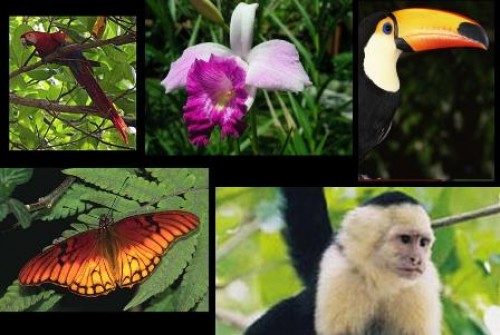Costa Rica is considered one of the most biodiverse countries. Thanks to its privileged geographical location in Central America and the presence of tropical climates with mountain ranges, volcanoes, beaches and forests, its territory has a great variety of ecosystems that have become home to more than 500,000 species of plants and animals. They constitute about 5% of the planet’s biodiversity. “With only an area of 51,100 km², Costa Rica is one of the 25 countries with the greatest biodiversity in the world.”

Analysis for the conservation of forest species
The protection of biodiversity has become one of the pillars of the 2030 Agenda, promoting the development of initiatives aimed at the sustainable use of natural resources and the conservation of ecosystems. For this reason, Cepei, based on the data provided by the National Museum of Costa Rica on its Herbarium digital platform, prepares this research, in order to contribute to the production of scientific knowledge on the preservation of nature in Costa Rica.
From the analysis of spatial data and the use of descriptive statistics, it was possible to determine the degree of threat of the most representative forest species of Costa Rica, especially those that are not part of any of the areas of ecological importance of the National System of Conservation Areas – SINAC.
Likewise, this history with data considers the implementation of the international agreement CITES (Convention on International Trade in Endangered Species of Wild Fauna and Flora (CITES) whose incidence among the governments of the region, facilitates the regulation of trade activities of species of flora and fauna at the regional level, focusing on the protection of those species considered in danger of extinction.History links this type of agreement as a tool to guarantee the conservation of biodiversity.
The central axis of the story is the analysis of the species considered in danger of extinction according to the Convention on International Trade in Endangered Species of Wild Fauna and Flora (CITES) in Costa Rica. This agreement, agreed between the governments of the world, focuses on the protection of those species considered in danger of extinction.
On the other hand, the results of the research available in the Public section of the platform www.datarepublica.org made it possible to identify that about 40% of the forest species analyzed are found outside one of the SINAC conservation areas, which implies that they are more susceptible to the illegal trafficking of species, especially the species Guaiacum Sanctum, also known as Guayacán Real.
The story also highlights the importance of Sustainable Development Goal 15, in particular target 15.1 which refers to the “Red List Index”, associated with taking action to reduce the degradation of natural habitats and halt the loss of biodiversity, which in the case of Costa Rica is highly influenced by illegal species trafficking activities.
Finally, with this research we seek to promote the use of non-traditional data sources to monitor processes related to biodiversity loss such as deforestation and the reduction of natural habitats due to productive activities that are carried out without considering the precautionary principle, in which the different global initiatives for the sustainable use of natural resources are framed.


